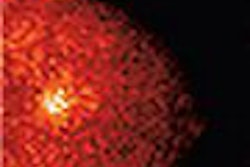Technology has brought about a sea change in the practice of medicine over the past 40 years, nowhere more observably than in the practice of medical imaging.
Molecular imaging, in particular, has been at the forefront of this transformation, with new modalities such as PET/CT and SPECT/CT, new radiopharmaceuticals and imaging probes, and new image processing algorithms that enable real-time 3D viewing.
Photomultiplier tubes (PMTs) have long been used in PET imaging to convert a light signal into an electrical one that can be processed, and, in turn, digitized. They are robust and have good performance characteristics. However, compared to a semiconductor-potential equivalent, they are bulky and mechanically more difficult to handle.
But competition could be on the horizon. Avalanche photodiodes (APDs) have an internal gain as a result of hole-electron pairs acquiring sufficient energy to generate additional pairs (hence the avalanche) from the incident photons, and one day could potentially outperform PMTs, according to Juan Jose Vaquero, Ph.D., from the Academy of Molecular Imaging.
Will APDs replace PMTs in medical imaging, resulting in smaller, lighter equipment that is easier to maintain? Find out in this edition's Insider Exclusive story. As a Molecular Imaging Radiology Insider subscriber, you have access to this story before it’s published for the rest of our AuntMinnie members. To read more about the advantages and disadvantages of APDs with PET, click here.
Also, be sure to drop in next month to catch our coverage of the Society of Nuclear Medicine's annual meeting in Philadelphia. We'll be bringing you stories each day from the leading edge of molecular imaging, from both a clinical and business perspective.




















